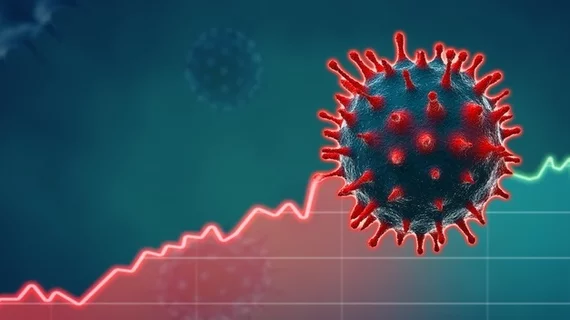RadNet says omicron surge hampered Q4 numbers, with hundreds of employees out on leave
Industry giant RadNet said the recent omicron COVID-19 variant surge hampered its fourth quarter numbers, with hundreds of employees out on leave.
The Los Angeles-based imaging center operator saw revenues dip by $4 million due to the outbreak while earnings before interest, taxes, depreciation and amortization fell $3 million. At the surge’s peak in December, RadNet had 565 employees out on COVID leave, or about 6.3% of its workforce, leaders said Tuesday.
However, that number has now decreased to 1.2% while patient volumes are returning to “normalized levels.” Despite the disruptions, RadNet still recorded revenues 8% higher than Q4 of 2020 and 7.5% higher EBITDA.
“This was the result of ongoing strong demand for our services and the continuing migration of patient procedures from hospitals to freestanding ambulatory outpatient imaging centers,” CEO Howard Berger, MD, said in a March 1 statement announcing the company’s quarterly and 2021 year-end results. “Moving into 2022, the demand for diagnostic imaging remains robust and is growing,” he added later.
RadNet reported MRI volume was up 13.8% when compared to Q4 of 2020 while CT climbed 10.7% and PET/CT remained flat. Overall imaging volume—including X-ray, ultrasound, mammography and other exams—leapt 11.4%. When calculating on a same-center basis, excluding new year-over-year additions, MRI was up 8%, CT 6.6%, PET/CT 0.4%, and overall routine imaging 7.3%.
All told, the imaging firm reported revenue of $333.2 million during the quarter and adjusted EBITDA of $54.5 million. Those represent increases of $24.6 million and $3.8 million, respectively, when compared to 2020’s four quarter. The numbers were also bolstered by a $2.8 million in provider relief funds from the Coronavirus Aid, Relief, and Economic Security Act, RadNet reported.
Without adjusting its Q4 financials for certain “unusual or one-time” items, the company reported a $3.8 million loss compared to net income of $6 million during the same time in 2020. That included $1.2 million in transaction costs tied to its acquisition of two artificial intelligence firms, $3.6 million for employee stock compensation, and $19.7 million in losses from abandoning leases due to facility closures.
Turning an eye toward 2022, RadNet estimated that cuts in the Medicare fee schedule will result in $7.4 million in reimbursement reductions. The company is also projecting to pay $15 million more on salaries and wage expenses this year. That stems from a “tight labor market where it has become more expensive to attract and retain talent at all levels,” Berger said.
Despite such hurdles, RadNet is projecting 2022 EBITDA at upward of $215 million, up from about $194.7 million last year when removing certain one-time items. Officials said their forecast is driven by same-center growth, reimbursement increases from private payers, expanded health system joint ventures, and contributions from acquisitions completed in 2021.
“We think our guidance has room for us to outperform, subject to the risks and uncertainties of a continuing COVID-19 environment, and we look forward to providing updates to this guidance as we progress through the year,” Berger said in the announcement.

